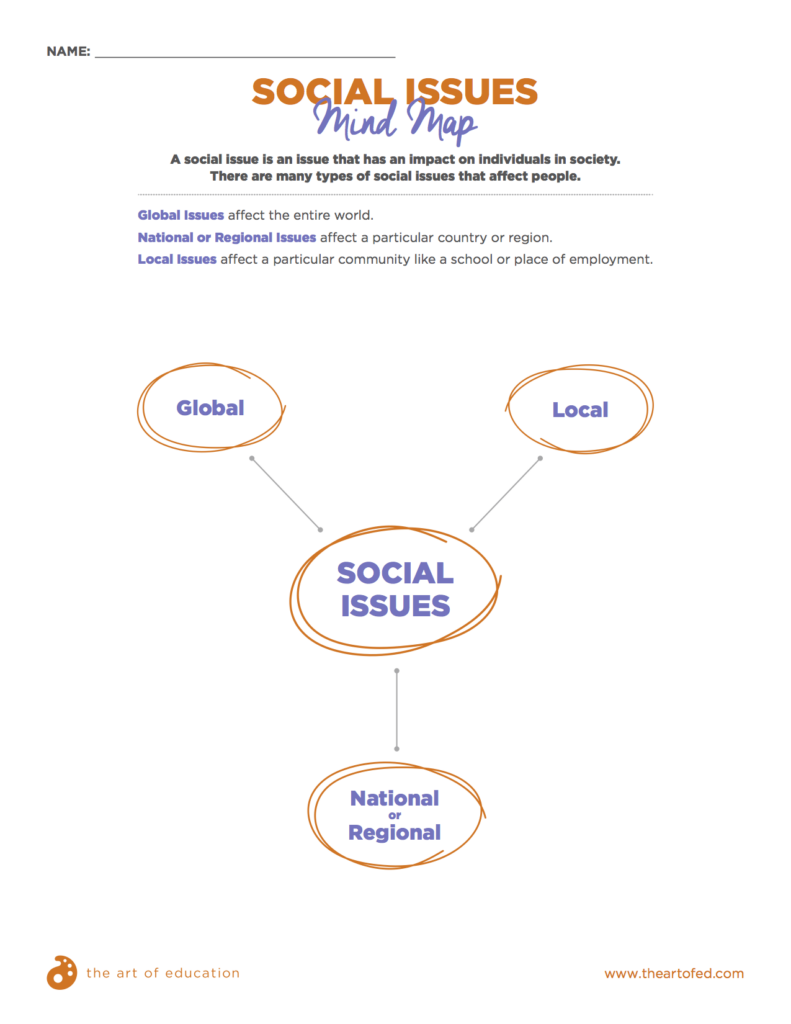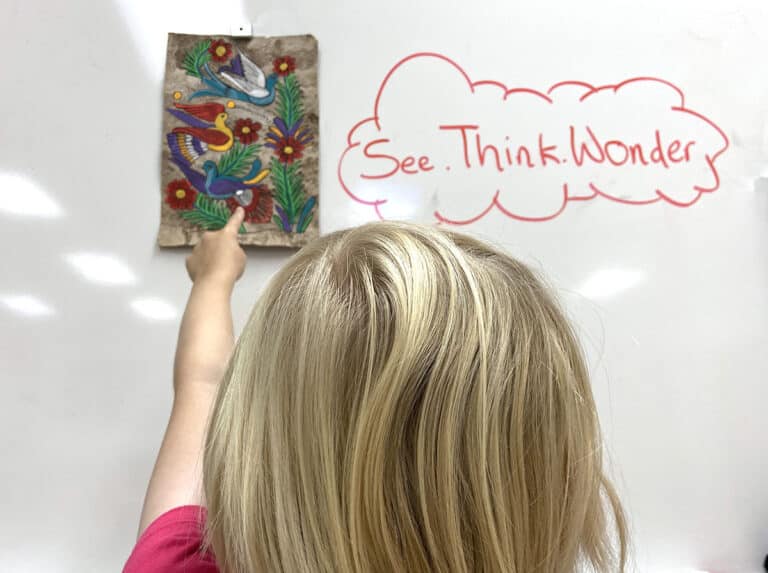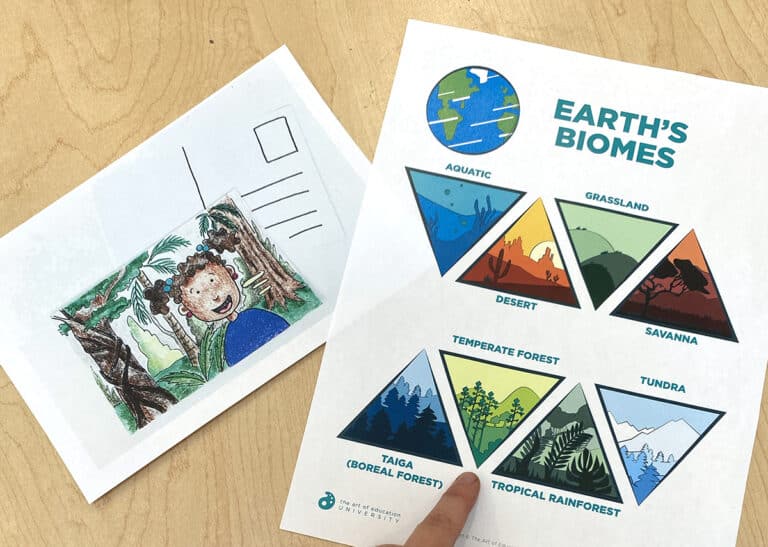Being a teacher is hard. Every day we are not only expected to teach academics but to solve the myriad of social problems our kid face. It’s assumed we’ll step up, but we’re also the first scapegoats when anything goes awry. It’s a lot of pressure.
On top of all of that, we live in a politically charged society and a culture that’s run by social media. There are so many factors that affect every one of us, and we all have strong feelings. The art room is the perfect place to allow students to respond to current events and express their feelings about the world in which they live. But how can you foster this important work from a place of neutrality?
Let’s take a look at how you can discuss social issues in your art room without inflicting your views and beliefs on your students.
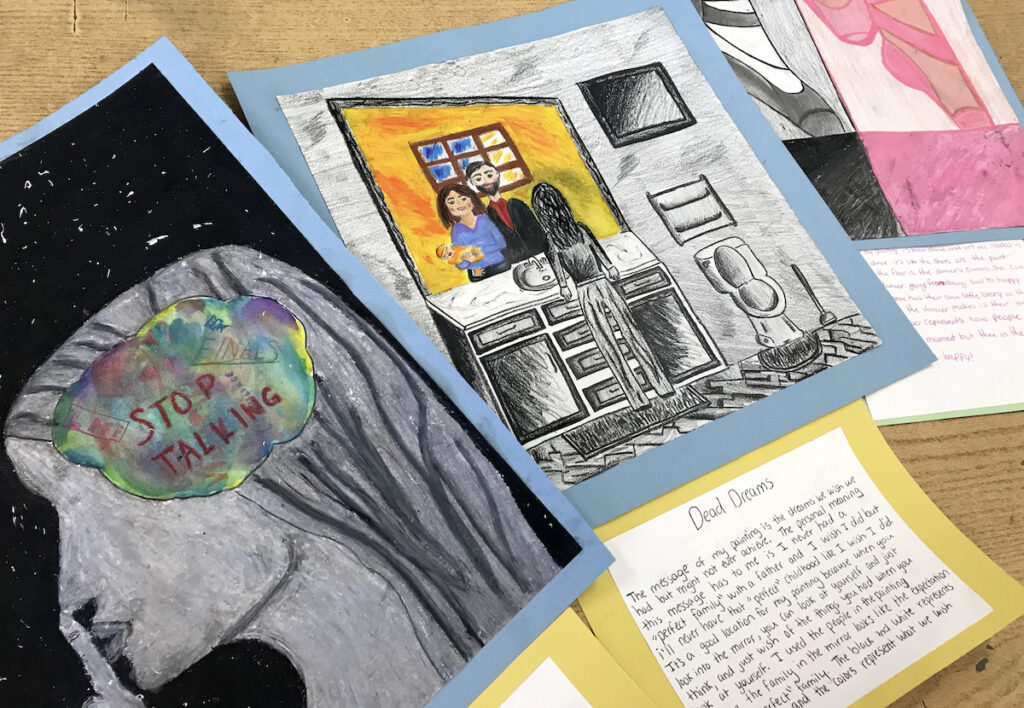
Set the Stage with Guidelines
Before getting into projects that explore social issues, it’s essential to set the tone of your classroom environment. You might consider having a set of rules or guidelines to serve as a reminder to students during discussions.
Here are some reminders you might include:
- It’s okay to disagree as long as you are respectful.
- Your experiences are different than your classmate’s experiences.
- Your classmates have experienced things you haven’t.
- Having different ideas and beliefs is okay.
- Wait your turn to talk.
Having discussions about these heavy topics is important. You will be amazed to find out more about your student’s passions. That said, you must remember you are the facilitator. It’s okay to have students discuss both sides of an issue, but do not start by sharing your own opinion. This will discourage students who think differently from you to share and honestly communicate.
Brainstorm with Mind Mapping
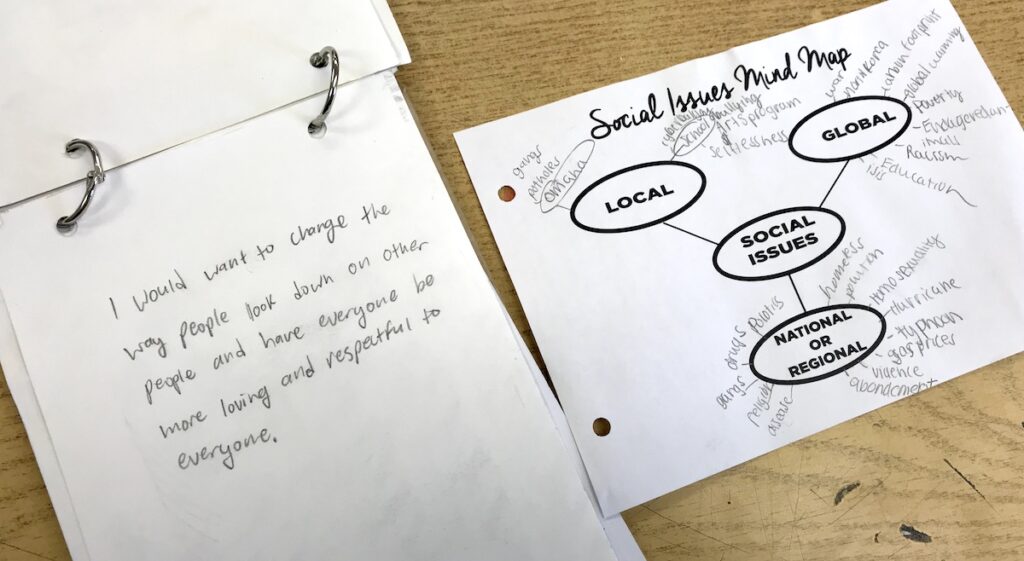
If you are not comfortable facilitating a conversation in your classroom, a great way to have students brainstorm is by using a mind map. This can be done individually or in small groups. A mind mapping activity will allow students to dump all of their ideas into one place, without having to pick sides. During this brainstorming stage, students can work together to come up with a list of social issues that are local, global, and national. Download the handout below to use in your classroom.
The mind mapping activity is an excellent tool for students to keep in their sketchbook throughout the year. It can give students ideas for future projects even if there isn’t an emphasis on a social issue. Once they’ve written down all of their thoughts, they can determine where they stand on an issue and why.
Respond Through Art
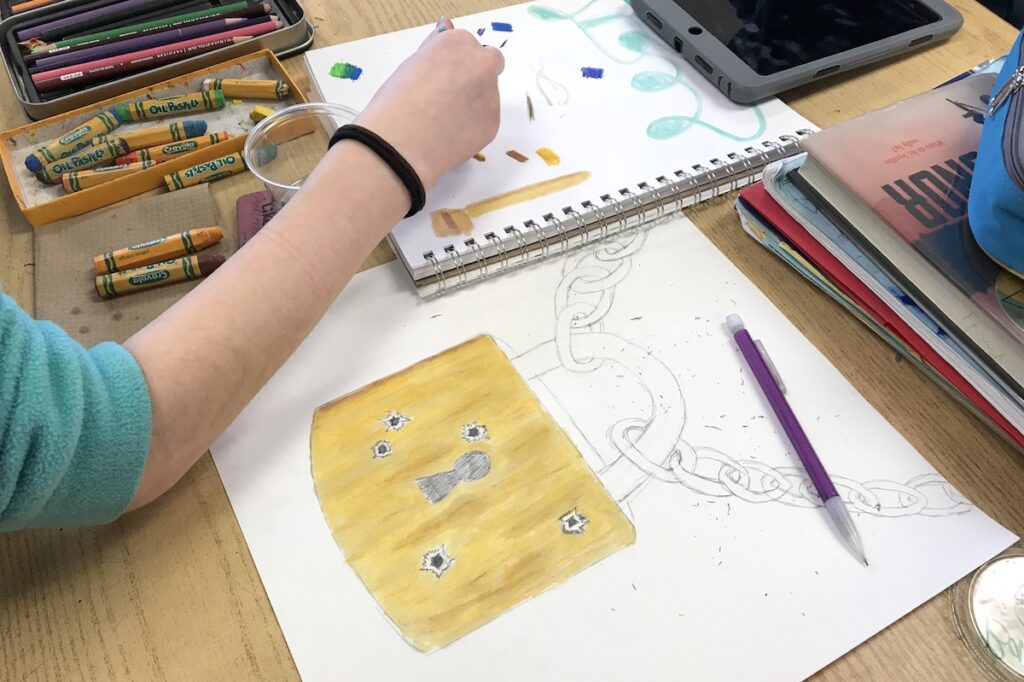
After students spend time brainstorming, challenge them to create an artwork with a message. Ask them, “What do you want your artwork to say?”
Introduce your students to the idea of symbolism and visual metaphor. Your students can convey powerful stories through imagery. Viewing the work of their peers is an excellent way for your students to practice analyzing and interpreting artwork. During this process, make sure to highlight how individual differences and experience may make each viewer reach a different conclusion.
Discussing social issues in your art room can be uncomfortable, but it is essential that we provide our students a safe, welcoming space to do so. Students can use art as an outlet to share and express their message in a way that can be therapeutic and constructive.
If you’re interested in reading even more on this topic, check out these articles from our archives:
- The Perfect Project to Teach Your Students About Art and Activism
- The Power of Art to Heal Trauma
- Teach Your Students to Use Art as a Tool for Social Advocacy
- Do Religion and Politics Belong in the Art Room?
- How to Help Students Process, Reflect, and Enact Change
Do you feel comfortable discussing social issues in your classroom?
What projects have you done that focus on social issues?
Magazine articles and podcasts are opinions of professional education contributors and do not necessarily represent the position of the Art of Education University (AOEU) or its academic offerings. Contributors use terms in the way they are most often talked about in the scope of their educational experiences.
